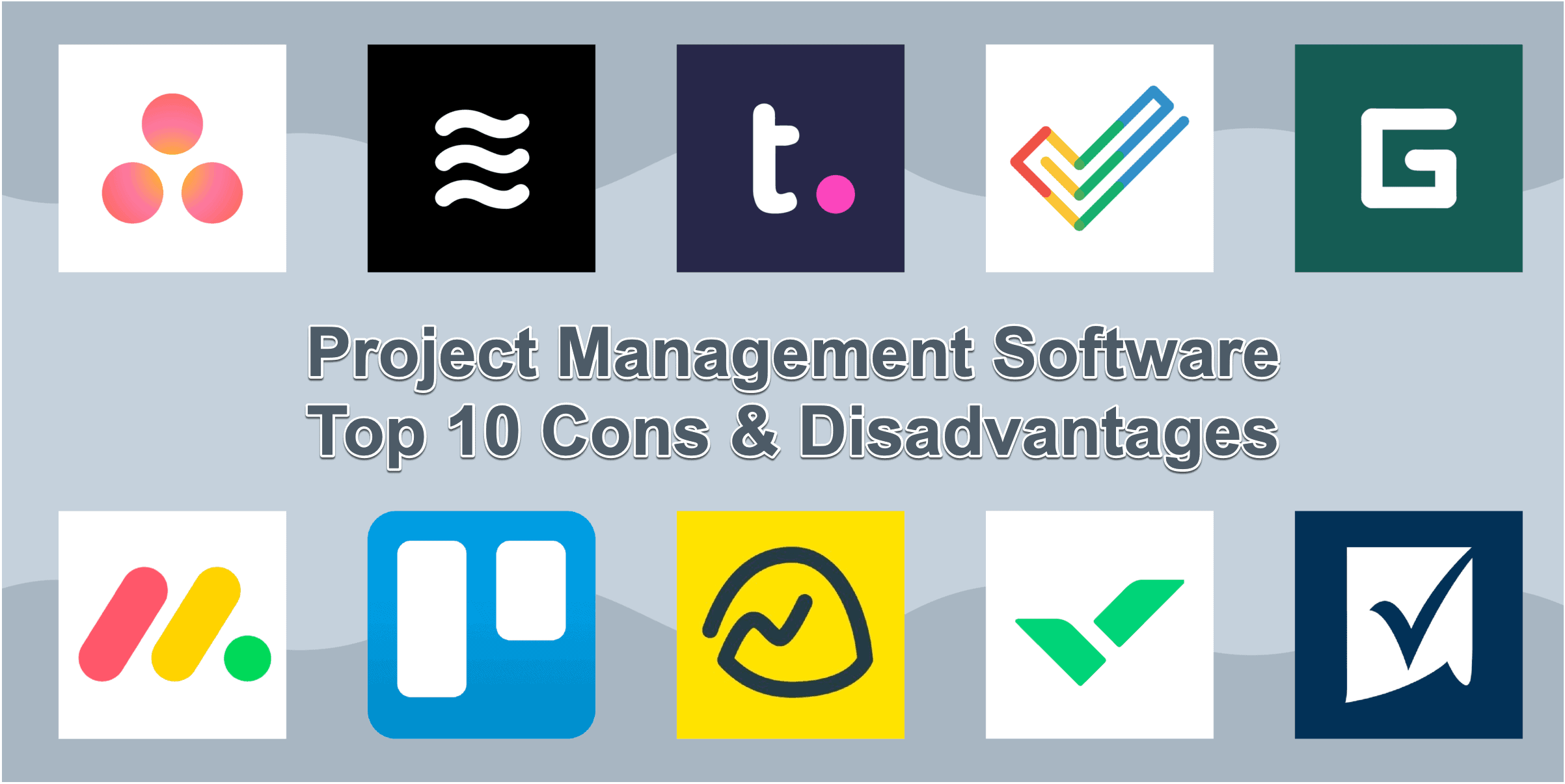
In today’s rapidly digitizing world, project management software has become almost ubiquitous. Organizations and teams of all sizes swear by these tools, leveraging their capabilities to streamline operations and optimize productivity.
While the myriad advantages of these systems are sung far and wide, it’s crucial to also step back and analyze their potential shortcomings. Like any other tool, project management software is not a magic pill and comes with its set of drawbacks.
Top 10 Cons & Disadvantages: Project Management Software
While project management software offers a plethora of advantages, it’s not without its pitfalls. Let’s delve deep into the top ten disadvantages that users might face when employing these tools.
1. Learning Curve
The introduction of any new system invariably involves growing pains, and Project Management Software (PMS) is no exception. Often, these platforms have myriad features, each with its own unique functions. While they’re designed for efficacy, the sheer number of capabilities can be overwhelming for users, especially those less acquainted with digital tools. The need for extensive training sessions to familiarize the team with the platform can lead to initial slowdowns, thereby hampering productivity. Moreover, as updates and upgrades roll out, the cycle of adaptation begins anew, posing persistent challenges.
2. Over-Reliance on Technology
As teams become accustomed to the efficiency and convenience of PMS, there’s an inherent risk of becoming overly tethered to the digital domain. When glitches or downtimes occur, which is inevitable with any software, work can come to a grinding halt. This dependence means that any technical hiccup, however brief, can result in missed deadlines or stalled projects.
3. Costs
There’s no denying the potential financial burden of PMS. Beyond the obvious costs of purchasing or subscribing to these platforms, there are hidden expenses. Training sessions, software maintenance, periodic updates, and potential add-ons can strain a company’s budget. For startups or smaller enterprises, these cumulative costs might be unsustainable.
4. Communication Barriers
In the era of digital communication, the nuances of face-to-face interactions often get lost. Relying solely on PMS for team interactions can lead to miscommunications. Absent the non-verbal cues of traditional communication, misunderstandings can arise, potentially jeopardizing project outcomes.
5. Data Security Concerns
With cyber threats looming large, entrusting sensitive project details to a third-party platform is daunting. Even with assurances of encryption and multi-layered security protocols, no system is impervious to breaches. The ramifications of a security lapse, especially with confidential projects, can be catastrophic.
6. Can Lead to Complexity
Paradoxically, the very features designed for efficiency can lead to complications. With a multitude of functions at their fingertips, teams might find themselves lost in a maze of unnecessary capabilities. This overabundance can detract focus from core project objectives.
7. May Not Always Fit the Bill
Every project is a unique entity with its own set of challenges. Universal PMS platforms might not cater to the specific needs of every project, leading to potential inefficiencies. The rigidity of some software can make tailoring them to fit particular project needs an arduous task.
8. Integration Issues
PMS rarely functions in isolation. It often has to seamlessly integrate with other tools and systems within an organization. Data discrepancies, synchronization issues, or compatibility challenges can arise, causing disruptions and necessitating constant oversight.
9. Potential for Mismanagement
A digital dashboard displaying task completions can give a false sense of security. The risk lies in equating digital checkmarks with quality work. Without proper oversight, tasks might be marked as complete without meeting the requisite standards, leading to compromised project quality.
10. Can Promote a Reactive Approach
The real-time nature of updates and alerts within PMS can inadvertently foster a reactive work culture. Instead of proactive planning and foresight, teams might find themselves perpetually responding to immediate notifications, potentially sidelining long-term planning and strategy.
What is Project Management Software?
Project Management Software (PMS) is a digital tool designed to aid teams in organizing tasks, allocating resources, managing budgets, and monitoring project progress. It provides a centralized platform where teams can collaborate, track milestones, and ensure projects are progressing as planned. By offering features like task management, time tracking, and document collaboration, PMS aims to ensure projects are completed efficiently and within the stipulated timeframe.
Conclusion
Project management software, while a boon in many respects, is not devoid of challenges. It’s crucial for teams to weigh the pros and cons before diving headfirst into adoption.
While the software can streamline many aspects of project management, it’s essential to remember that it’s a tool, not a replacement for human judgment, communication, and proactive management. Balancing the use of PMS with traditional management strategies can lead to optimal results.
Daniel Raymond, a project manager with over 20 years of experience, is the former CEO of a successful software company called Websystems. With a strong background in managing complex projects, he applied his expertise to develop AceProject.com and Bridge24.com, innovative project management tools designed to streamline processes and improve productivity. Throughout his career, Daniel has consistently demonstrated a commitment to excellence and a passion for empowering teams to achieve their goals.